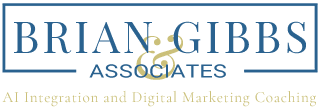How to Use Geographic Segmentation in Marketing Your Business
Key takeaway:
- Geographic segmentation in digital marketing is important because it allows marketers to target specific locations, increasing the effectiveness of their campaigns.
- By segmenting campaigns geographically, businesses can save costs by focusing their marketing efforts on areas with a higher likelihood of conversion.
- Using geographic segmentation helps marketers provide more relevant content to customers, increasing their engagement with the brand and boosting the chances of a successful conversion.

Importance of Geographic Segmentation in Digital Marketing
Geographic segmentation in digital marketing can make or break your campaign. By understanding this strategy’s importance, you can precisely target specific regions. Discover the benefits of geographic segmentation, how it can make your marketing campaigns cost-effective, and how it increases relevance to your customers. With facts and figures backing its effectiveness, incorporating geographic segmentation into your next digital marketing campaign is a game-changer. Let’s dive into why it matters and how it can take your marketing efforts to new heights.
Benefits of Geographic Segmentation

Geographic segmentation in digital marketing offers many advantages
Geographic segmentation in digital marketing offers many advantages to boost the efficiency of a marketing campaign. By aiming at particular geographical areas, companies can adjust their marketing strategies better to suit the needs and preferences of local customers.
Benefits include:
- Improved relevance, as firms can provide personalized messages and offers that are pertinent to customers in particular places.
- Additionally, it is cost-effective as businesses can concentrate their resources on areas where they are more likely to obtain and convert potential customers.
- Customer engagement is enhanced by geographic segmentation since firms can communicate with customers on a more personal level. This approach allows businesses to communicate with customers in a manner that coincides with their regional culture, language, and preferences.
- Lastly, increased ROI is made possible when marketing efforts target specific geographic segments, as companies can obtain a higher return on investment. Companies can make the most of their marketing campaigns by customizing products, pricing, and promotional strategies to meet the needs of different regions.
Collect accurate geographic data using available tools to capitalize on the advantages of geographic segmentation in your next digital marketing venture. Analyze this data to determine target segments based on location as well as climate, cultural, and populational factors. Adapt your products, pricing, and marketing strategies to these segments, ensuring relevance and boosting customer engagement. Regularly monitor and evaluate the results of your geographic segmentation efforts to perfect future campaigns and optimize ROI.
Cost-Effective Marketing

Adopting a cost-effective marketing approach is beneficial to businesses.
Adopting a cost-effective marketing approach is beneficial to businesses. It allows them to allocate resources strategically, targeting only markets they are likely to have an impact. Thus avoiding wasting time and money.
Another advantage of cost-effective marketing is that it allows companies to tailor their messages and offerings according to the needs and preferences of each target market. With this knowledge, businesses can create more relevant and personalized campaigns.
Also, cost-effective marketing enables companies to optimize pricing strategies. It takes into account the purchasing power and price sensitivity of each geographic segment. With this, businesses can attract more customers and gain a competitive edge.
In short, implementing cost-effective marketing strategies in digital campaigns offers businesses higher efficiency and effectiveness. This is done by optimizing resource allocation, tailoring messages and offerings, and adjusting pricing based on local market conditions.
Plus, cost-effective marketing increases relevance to customers. It’s like saying, “We know where you live!”
Increased Relevance to Customers
Geographic segmentation in digital marketing can make customers feel understood and connected to businesses. It’s a way to personalize campaigns and increase relevance based on specific geographic factors. This leads to higher engagement and conversion rates.
Here are 6 ways geographic segmentation can benefit businesses:
- 1. Personalized Messaging: Tailor messaging to the local culture and climate.
- 2. Targeted Offers: Provide promotions and discounts to certain locations.
- 3. Localized Content: Create content relevant to a specific location.
- 4. Improved Customer Experience: Localizing product availability and delivery options.
- 5. Enhanced Targeting: Identify and target customer segments based on location.
- 6. Increased Trust and Engagement: Relevant messages lead to longer-lasting customer relationships.
Geographic segmentation helps businesses create tailored marketing campaigns that resonate with their target audience. This can result in increased customer satisfaction and loyalty.
Key Variables for Geographic Segmentation in Digital Marketing
Geographic segmentation plays a vital role in digital marketing, allowing businesses to tailor their campaigns based on specific location-related variables. In this section, we will explore key variables for geographic segmentation and their impact on digital marketing strategies.
From considering location as the primary variable to analyzing climate, seasonal, and cultural and populational factors, we will uncover how these elements influence successful campaign targeting and customer engagement.

Key Variables for Geographic Segmentation
Location as Primary Variable
Geographic segmentation uses location as its primary variable to divide a target market. Companies can tailor their strategies better to understand regions’ unique characteristics and demands, creating targeted campaigns. Leveraging location as the main variable allows businesses to gain insights into regional preferences and cultural influences. This helps create personalized experiences, optimizing product offerings, pricing, and promotional efforts. Utilizing location as a primary variable also enables businesses to optimize budget allocation for digital marketing campaigns. Targeting areas with higher demand or potential for growth maximizes cost-effectiveness and focuses marketing efforts where they will generate ROI.
Climate and Seasonal Factors
For marketing success, consider climate and seasonal trends. This table provides a visual of key variables related to climate and season that should be taken into account. It is an insight into how customer behavior is impacted by weather patterns. Businesses can make decisions based on this to create customized experiences for customers.
| Key Variables | Climate | Season |
|---|---|---|
| Customer Behavior | Impacted by weather patterns | Vary based on the time of year |
| Marketing Strategies | Adjust based on weather and consumer behavior | Consider the climate and seasonal factors in digital campaigns |
| Segmentation Strategy | Incorporate climate and season into targeting | Understand customer needs in different climates and seasons |
Marketers should regularly monitor changes in weather and consumer behavior. Data analysis will help identify trends so marketing strategies can be adjusted. This monitoring keeps campaigns relevant.
Leverage climate and seasonal factors in your digital campaign. Incorporate them into a segmentation strategy to deliver targeted messages. Understand what customers need in different climates and seasons. Start climate-based segmentation now for competitive advantage! Plus, consider cultural and population factors too.
Cultural and Population Factors
In marketing, cultural and populational factors must be understood and used in strategies.
Cultural factors involve preferences, customs, and beliefs of a particular area, which can influence consumer behavior. By understanding the nuances of various regions, marketers can customize products and campaigns to suit the target audience.
Population factors involve demographic characteristics like age, gender, income, and education, which vary across different populations. Marketers can therefore create tailored campaigns that appeal to the needs and preferences of different population segments. This helps companies connect with their customers and increase conversion.
Buying power should also be taken into account when considering geographic segmentation. This data helps businesses optimize pricing and offer products or services that fit the target population’s income level. This maximizes their chances of success.
Analyzing populational factors also helps businesses expand by recognizing potential markets with high growth. This strategic insight guides decision regarding market expansion, allowing companies to access new customer bases and grow their market share.
Studies and data have demonstrated the effectiveness of geographic segmentation based on cultural and populational factors in targeted marketing campaigns. Thus, businesses must consider and integrate these factors into their marketing plans.
Successful Examples of Geographic Segmentation in Digital Marketing
Geographic segmentation in digital marketing has proven to be a powerful tool for targeting specific audiences. This section will explore successful examples of this strategy in action.
From a case study on pool supplies in warmer climates to customized menus tailored to local tastes and even opening locations in appropriate income areas, these examples will showcase the effectiveness of geographic segmentation in driving successful marketing campaigns.
Case Study: Pool Supplies in Warmer Climates
Geographic segmentation is important for successful digital marketing campaigns, as seen in a case study about pool supplies in warmer climates. Businesses can use this approach to target an audience and build a connection with them. It also helps firms save resources and get a good return on investment.
The aim is to get pool supplies to customers in warmer climates. Companies can look at the climate and seasonal data to see where these products are more in demand. Other factors like culture and population also come into play.
Businesses can then tailor their products, pricing, and messages to each region. For instance, an advertisement in a warm climate could feature pool supplies that help maintain water temperature or protect from sun damage.
Key Performance Indicators (KPIs) can be used to track the success of the campaign. These include sales growth, customer satisfaction, and ROI. After measuring, businesses can use this info to improve their strategies for future campaigns.
In conclusion, geographic segmentation is vital for digitally marketing pool supplies in warmer climates. By targeting specific areas and considering cultural and population factors, businesses can get customized products to customers. Through monitoring and optimization, firms can ensure ongoing success.
Case Study: Customized Menus to Local Tastes
Customizing menus to local tastes is a key part of geographic segmentation in digital marketing. Companies need to understand the culture and preferences of regions. This way, they can provide items that people will love.
To illustrate, let’s look at a case study. A restaurant chain successfully customized menus for different areas. They provided local dishes that people enjoyed. Here is what the menu looked like:
- North: Spicy food, hearty meals.
- South: Traditional southern cuisine, comfort food.
- East: Healthy and organic options.
- West: Fusion cuisine, international flavors.
Moreover, businesses must factor in dietary restrictions, ingredients, and culinary traditions. With this data and geographic segmentation, companies can create menus that people will enjoy.
Case Study: Opening Locations in Appropriate Income Areas
Geographic segmentation is a successful tactic. It involves opening locations in areas with the right income levels. Companies can assess demographic and economic data to find areas that match their target audience. This increases the chances of customers buying products or services.
A retail chain did a case study. They opened stores in neighborhoods with higher incomes. This led to higher sales and profitability. The chain targeted customers who could afford their brand. This strategy resulted in customer satisfaction and loyalty.
Another case study focuses on a restaurant chain. They based segmentation on income levels. They customized menus and prices to fit local demographics. This attracted customers and made them more loyal.
It’s important for businesses to consider the income levels of target markets when making decisions. With thorough market research and geographic data, companies can open new locations in areas with the right income. This leads to increased sales, customer satisfaction, and overall success.
Reference: How to Use Customer Segmentation to Improve the Performance of Your Marketing Campaigns. If you want your campaign to be successful, don’t forget geographic segmentation.
Implementing Geographic Segmentation in Your Next Digital Marketing Campaign
Implementing geographic segmentation in your next digital marketing campaign can significantly boost its effectiveness. Discover the tools and data sources for collecting geographic information, analyze this data to identify target segments, tailor your products, pricing, and marketing strategies accordingly, and monitor and measure the results of your geographic segmentation efforts. With the right approach, you can leverage geographic segmentation to target specific markets and drive better results for your campaigns.
Tools and Data Sources for Collecting Geographic Information
Geographic segmentation in digital marketing needs various tools and data sources to collect geographic info. These resources help marketers target particular locations and customize their strategies for increased customer relevance. Companies can use these tools and data sources to obtain accurate info about the geographical location of their target audience. This way, they can design more effective campaigns.
Tools and data sources for collecting geographic info in digital marketing include location-based apps, geospatial data platforms, demographic databases, and consumer behavior tracking systems. Marketers can use data from these sources to gain insights into the geographical distribution of their target audience and recognize key areas for campaign targeting. See the table below for some examples:
| Location-Based Applications | Geospatial Data Platforms | Demographic Databases | Consumer Behavior Tracking Systems |
| – Google Maps | – Geographic Information Systems (GIS) | – U.S. Census Bureau Data | – Online Purchase Patterns |
| – Yelp | – Geofencing Technologies | – Nielsen PRIZM Segmentation Data | – Online Search History |
Social media analytics platforms and online surveys are other useful tools for collecting geographic info. Social media platforms provide info on customer preferences based on location-specific interactions and online behaviors. Surveys allow marketers to get direct feedback from customers about their geographical preferences and buying patterns. Thus, these resources improve the ability to collect accurate and relevant geographic info for effective campaign targeting.
Consider a story about a multinational fast-food chain to show the effectiveness of using tools and data sources for collecting geographic info. They used location-based apps and geospatial data platforms to analyze customer locations and identify areas with high demand for their products. Their sales and customer engagement significantly increased by tailoring their strategies to target these particular geographical regions. This story emphasizes the importance of using tools and data sources in geographic segmentation for digital marketing campaigns.
Analyzing Geographic Data to Identify Target Segments
Geographic data analysis is the key to effective target segment identification. Tools and data sources like customer addresses, IP addresses, and geolocation data from mobile devices can be used. Through this, businesses can refine their digital marketing campaigns for increased relevance and efficiency.
Geographic segmentation lets businesses tailor their products, pricing, and communication to specific locations. It helps them understand consumer behavior in different locations. This understanding is beneficial for adjusting strategies and making informed decisions.
Tables are useful for organizing and visualizing gathered information. Columns can be created to compare demographic factors across different geographical segments. For instance, companies can cross-reference income levels with location data. This allows them to identify areas with higher purchasing power and adjust their pricing accordingly.
Continuous monitoring and measurement of marketing campaigns are crucial. Businesses should track key performance indicators like click-through and conversion rates in different geographic segments. This assessment helps optimize marketing towards specific target segments and ensures maximum ROI.
It’s time to make your marketing strategies stand out! Get ready to craft perfect products, pricing, and marketing strategies through geographic segmentation.
Tailoring Products, Pricing, and Marketing Strategies

Businesses can tailor products, pricing, and marketing strategies according to geographic segmentation.
Businesses can use tools and data sources to gather information for tailoring products, pricing, and marketing strategies according to geographic segmentation in digital marketing. These may include geolocation tracking tech, survey data collection systems, or market research reports.
The data can be analyzed to identify target segments based on their unique characteristics, such as location or seasonal patterns. This helps businesses match their offerings with customers’ needs and wants in each targeted area.
To enhance their campaigns, companies must adapt their products, pricing strategies, and marketing approaches based on insights from geographic segmentation. For example, a business selling pool supplies might offer different product bundles for warmer or colder climates. A restaurant chain might customize its menu items to local tastes and preferences in different locations. Companies can ensure maximum relevance with their target audience by tailoring these aspects of their business operations according to geographic factors such as climate and culture.
Monitoring and Measuring Results of Geographic Segmentation
Geographic segmentation is an awesome tool digital marketers use to target particular areas for their campaigns. With this segmentation, they make sure their marketing reaches the right audience in the right spot. But to assess how effective these campaigns are, they must keep an eye on and measure the results.
To monitor the outcomes of geographic segmentation, marketers can utilize various tactics like geo-tagging, heat maps, and A/B testing. Geo-tagging tools track user location data, measure engagement and conversion rates, and other KPIs for each geographic segment. This data aids marketers in making data-driven decisions and adjusting their campaigns in real time.
Heat map analytics is another useful tool marketers can use to show customer behavior patterns across different regions. They can gain insights into the highest engagement and conversion rates by analyzing heat maps. This info can then be used to further refine their targeting and marketing strategies.
A/B testing is yet another strategy marketers can employ to compare how different messages, prices, or products affect various geographic segments. By conducting these tests, they can identify which strategies work best in certain regions and tailor their campaigns accordingly.
By monitoring and measuring the results of geographic segmentation, digital marketers can gain a deeper understanding of their target audience’s needs, preferences, and behaviors in different regions. This understanding allows them to modify their marketing strategies for maximum impact.
Implementing these monitoring techniques gives useful insights and lets marketers keep refining their campaigns based on real-time data analysis. Ignoring this step could lead to missed opportunities and ineffective marketing efforts. So, it’s important for marketers to prioritize monitoring and measuring the results of geographic segmentation to ensure their campaigns succeed.
Some Facts About Geographic Segmentation in Digital Marketing: How to Use it for Your Next Campaign:
- ✅ Geographic segmentation allows businesses to target specific groups of people based on their location, such as country, region, city, or neighborhood. (Source: The Balance)
- ✅ By segmenting their audience geographically, marketers can tailor their marketing messages, products, and services to suit the needs and preferences of different customer groups. (Source: Neil Patel)
- ✅ Geographic segmentation helps businesses understand consumer behavior influenced by location, such as regional preferences, cultural variations, and climate-related demands. (Source: FluentCRM)
- ✅ Implementing geographic segmentation in digital marketing allows businesses to personalize their marketing efforts, allocate resources effectively, and gain a competitive edge by addressing local factors. (Source: AdRoll)
- ✅ Some examples of geographic segmentation in digital marketing include tailoring marketing strategies to specific regions, offering location-specific promotions, adapting products to cultural preferences, and optimizing user experience based on geographic factors. (Source: LinkedIn)
FAQs about Geographic Segmentation In Digital Marketing
Q: What is geographic segmentation, and how can it benefit my business?
A: Geographic segmentation is one type of market segmentation that focuses on dividing prospective customers into different groups based on their geographic location. By using this type of segmentation, businesses can focus their marketing efforts on specific geographic segments, which can lead to more relevant marketing messages and a higher probability of converting those prospects into customers. Some advantages of geographic segmentation include a better understanding of local customer wants and needs, more effective marketing campaigns, and potentially lower marketing costs.
Q: What are some examples of geographic segmentation variables that I can use?
A: There are several variables that businesses can use when implementing geographic segmentation, including population density, climate, region, city size, and even zip code. These variables can help businesses identify which areas have the highest concentration of prospective customers for their products or services and allow them to tailor their marketing messages accordingly.
Q: How does geographic segmentation differ from other types of segmentation?
A: Geographic segmentation is just one type of segmentation that businesses can use to divide their market into different groups. Other types of segmentation include demographic, psychographic, and behavioral segmentation. While demographic segmentation focuses on dividing prospects based on age, gender, income, and other demographic information, psychographic segmentation looks at people’s values, attitudes, and behaviors. Behavioral segmentation, on the other hand, divides prospects based on how they interact with products and brands. By using geographic segmentation, businesses can focus specifically on customers in certain areas, regardless of their demographic, psychographic, or behavioral characteristics.
Q: Can you provide a segmentation example using geographic variables?
A: Sure! Let’s say you’re a restaurant owner who wants to use geographic segmentation to target specific areas for your next marketing campaign. You might start by dividing your city up into different regions, and then analyzing each region to see which ones have the highest density of people who are likely to eat at your restaurant. You might also look at other geographic variables, such as proximity to major attractions or public transportation. Once you’ve identified these areas, you can create targeted advertisements and promotions that speak directly to those customers.
Q: How can I use geographic segmentation to improve my market positioning?
A: By using geographic segmentation, businesses can identify areas where they have the greatest potential for success and focus their efforts on those areas. This can be especially beneficial for businesses that sell certain products that are more popular in certain areas. For example, if you run a surf shop, you might use geographic segmentation to target areas that are known for having high waves and strong surf culture. Focusing your marketing efforts on these areas can improve your market positioning and potentially increase your product sales.
Q: How does geographic segmentation help me create relevant marketing messages?
A: One of the great things about geographic segmentation is that it allows you to tailor your marketing messages and promotions to specific areas. By understanding the wants and needs of customers in a particular geographic area, you can create marketing messages that are more relevant and compelling to those customers. This can increase the likelihood that they’ll respond positively to your marketing efforts and ultimately make a purchase.
Q: How can I use geographic segmentation to target my advertising?
A: Geographic segmentation can be a powerful tool for businesses that want to create targeted advertisements. By analyzing data on where your customers live and work, you can create advertisements that are specifically designed to appeal to people living in those areas. For example, if you run a fitness studio, you might target your advertisements to people living in neighborhoods that have a high concentration of health-conscious people. By doing so, you can increase the effectiveness of your marketing efforts and potentially attract more customers.
Q: Can you provide a geographic segmentation example for a business launching in a new geographic location?
A: Sure! Let’s say you’re a software company that is launching a new product, and you want to use geographic segmentation to target specific areas. You might start by doing research on the areas where your product would be most likely to sell well based on factors such as population density, income, and demand for similar products. Once you’ve identified those areas, you can create targeted marketing campaigns and promotions that speak directly to the needs and interests of customers in those areas.
Q: How does geographic segmentation relate to market positioning?
A: By using geographic segmentation, businesses can identify areas where they have the greatest potential for success and focus their marketing efforts on those areas. This can help them improve their market positioning by targeting areas where they have a competitive advantage or where their products are most likely to be in high demand. Businesses can increase their visibility and attract more customers by focusing on these areas.
Q: How can I use geographic segmentation to create effective marketing campaigns?
A: One of the key benefits of geographic segmentation is that it allows businesses to create more effective marketing campaigns. By understanding the wants and needs of customers in different geographic areas, you can create targeted marketing messages and promotions that are more likely to resonate with those customers. This can increase the effectiveness of your marketing campaigns and help you attract more customers.

